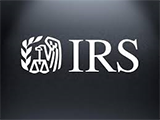H&W: Cadillac Tax – Information from the IRS
 For taxable years beginning in 2018, employers will have to pay excise taxes on high cost employer-sponsored health coverage; the so-called “Cadillac Tax”. The IRS recently issued its Notice 2015-16 (https://www.irs.gov/pub/irs-drop/n-15-16.pdf) in which it invited stakeholder input on regulations to be proposed to implement the tax. While the Notice itself is not a regulation or guidance and cannot be relied on, it did offer some insights to the regulatory approaches the IRS is considering.
For taxable years beginning in 2018, employers will have to pay excise taxes on high cost employer-sponsored health coverage; the so-called “Cadillac Tax”. The IRS recently issued its Notice 2015-16 (https://www.irs.gov/pub/irs-drop/n-15-16.pdf) in which it invited stakeholder input on regulations to be proposed to implement the tax. While the Notice itself is not a regulation or guidance and cannot be relied on, it did offer some insights to the regulatory approaches the IRS is considering.
The ACA imposes a 40% excise tax on excess benefits provided to an employee. Excess benefits are determined monthly and are equal to the excess of the aggregate cost of applicable coverage provided to an employee over a benchmark amount specified by statute. The benchmark for 2018 is $10,200 for self-only coverage and $27,500 for coverage other than self-only coverage; it is indexed annually for inflation.
In addition to the garden variety employer medical plan, the ACA mentions several other types of coverage that are considered to be “applicable coverage”. They include:
- Health FSAs (including salary reduction amounts and employer flex contributions);
- HSAs and MSAs (including salary reduction amounts and employer contributions) ;
- Coverage for on-site medical clinics;
- Retiree coverage;
- Multiemployer plans; and
- Coverage only for a specified disease or illness and hospital indemnity or other fixed indemnity insurance.
On-site medical clinics are not considered applicable coverage unless they provide more than a de minimis amount of medical care. Employers may be familiar with the treatment of on-site clinics for purposes of ERISA and/or COBRA. The IRS is seeking input on whether to expand the scope of the treatments and services on-site clinics can provide without becoming applicable coverage for purposes of the Cadillac Tax.
The ACA also excludes limited scope dental and vision benefits from the definition of applicable coverage. The wording of the statute raises questions about whether it applies only to insured benefits. Recent amendments to the excepted benefits regulations clarified that for other purposes under the ACA, self-insured dental and vision benefits could be excepted benefits. The same amendments also offered guidance on when EAPs could be considered excepted benefits. The Notice asks if there are any reasons why the government shouldn’t adopt the same rules relative to the Cadillac Tax.
In addition to the above items, the Notice states that “future guidance is expected to provide that executive physical programs and HRAs are applicable coverage.”
Regarding HSAs and MSAs, the IRS anticipates that “future proposed regulations will provide that (1) employer contributions to HSAs and Archer MSAs, including salary reduction contributions to HSAs, are included in applicable coverage, and (2) employee after-tax contributions to HSAs and Archer MSAs are excluded from applicable coverage.”
The Notice discusses at great length the approaches that the IRS is considering for determining the cost of applicable coverage. The ACA specifies that the cost should be determined according to rules similar to those that are used to calculate the COBRA applicable premium. Unfortunately, the existing COBRA rules are fairly sketchy.
The cost of COBRA must be based on the cost of coverage provided to a similarly situated non-COBRA beneficiary. In determining who is “similarly situated”, the IRS is considering an approach that would group all employees covered under a given benefit package and then subdivide those groups based on whether the employee has self-only coverage or other-than-self-only coverage. The IRS is further considering permissive disaggregation that would allow an employer to further subdivide the groups based on bona-fide employment-related criteria (not including health status) such as geography and job category.
Self-insured employers can calculate the COBRA applicable premium through actuarial methods or methods related to the past cost of the plan. The IRS is considering:
- Whether an employer that adopts one of these methods can ever switch to the other.
- Whether it should provide additional guidance on the specific factors that may be used with the actuarial method.
- Whether the employer should have any flexibility in determining the measurement period for the past cost method.
- What costs should be taken into account when using the past cost method.
- How to calculate the applicable cost for HRAs, particularly those with carry-over features and those where the HRA can be used to pay insurance premiums.
These comments touch only on some of the highlights of the Notice. Employers that have an interest in the outcome of the regulations are encouraged to file comments in accordance with the instructions provided at the end of the Notice.